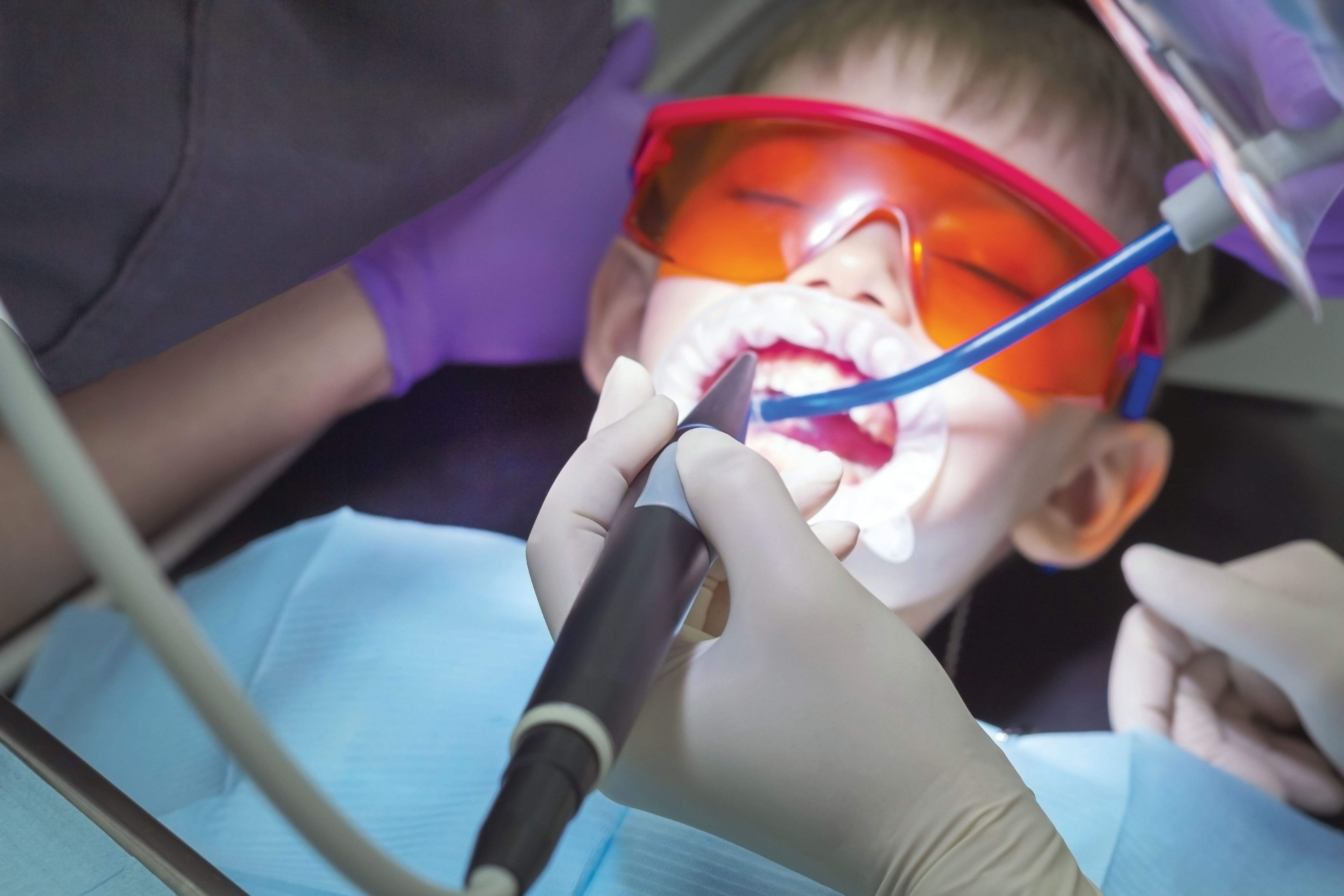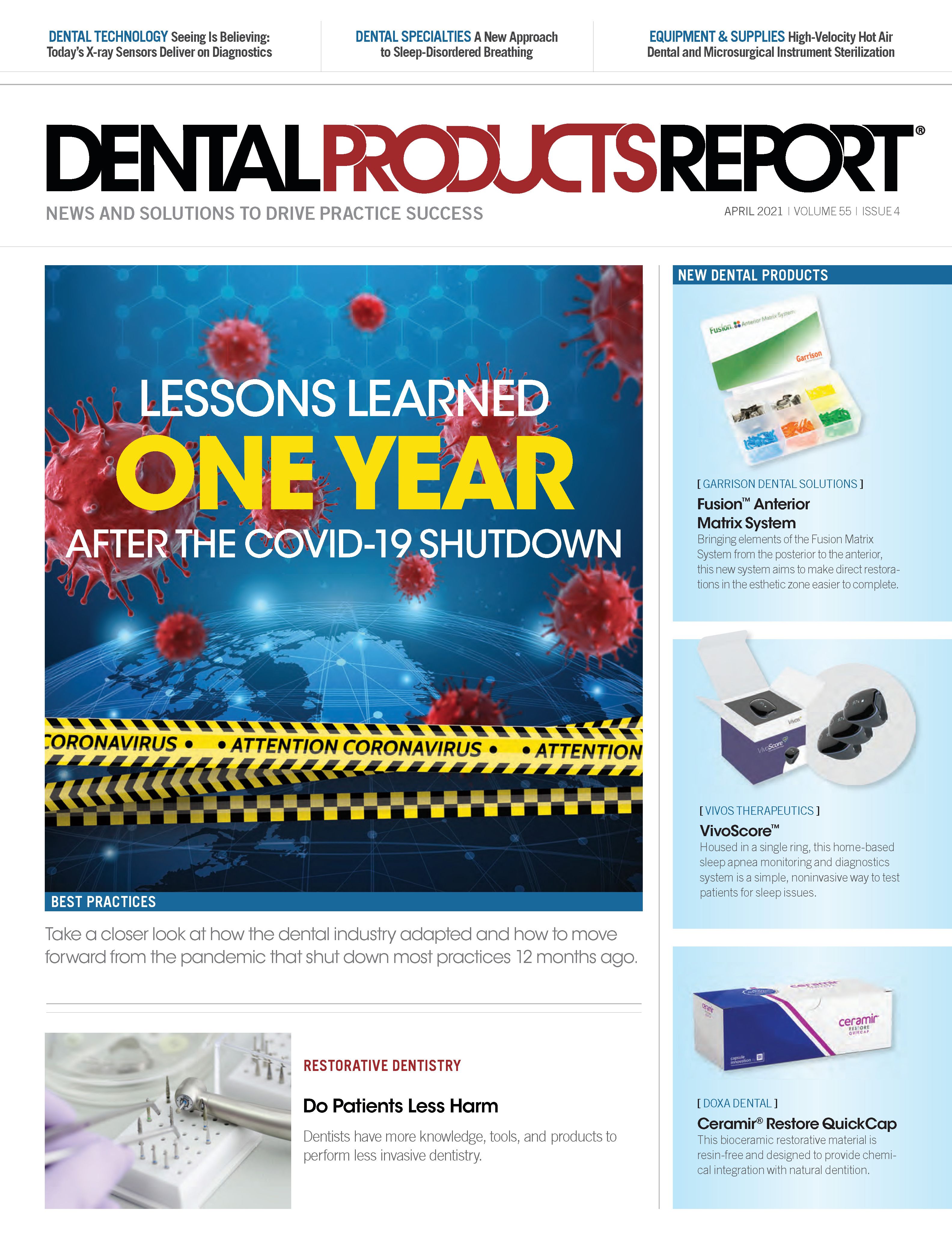The Must-Have Technology to Improve the Pediatric Dental Experience
Dental lasers are a great tool for the clinician when it comes to treating young patients in a friendlier, gentler manner.
ELENA / STOCK.ADOBE.COM

As a pediatric dentist, I’m continually re-evaluating treatments and tools to ensure that I can help set a tone for patients about what it means to “go to the dentist” that they will remember for the rest of their lives. Encouraging this mind-set should start with pediatric patients. Through this active pursuit, I have seen the evolution of technology firsthand. I feel like there are myriad of technologically advanced treatments that can benefit the patients, but unfortunately, not all of these technologies are available for children.
Finding Kid-Friendly Solutions
There are a limited number of options when searching for dental tools that will meet a child’s comfort level, which can create apprehension among young patients visiting the dentist. Ultimately, this apprehension may result in an aversion to proper oral hygiene and overall dental care throughout the patient’s life. In fact, dental fear and anxiety have been estimated to be about 9% in children, making trips to the dentist unenjoyable for all parties involved, including parents.1 During National Children’s Dental Health Month,2 I believe, we had the perfect opportunity to discuss tools dentists can turn to when looking to improve a child’s experience at the dental office.
In order to create a comfortable environment, it is still essential to consider what makes children afraid of the dentist. For many, especially younger ones, fear and anxiety come from the loud noises and vibrations produced by dental drills.
It is not surprising that loud noises can be alarming, particularly when patients cannot see what is happening inside of their mouth during a procedure. Even adults can experience anxiety because of noises produced by dental drills. Therefore, they may avoid seeking oral care as a result, which can also lead to avoiding dental visits for their children. Choosing quieter and gentler tools can significantly affect a child’s experience in a dentist’s chair, and dental lasers have proved to be an incredibly effective option with less sensory stimulation.
The tool I’ve personally found most useful for this is the Waterlase dental laser by BIOLASE, an all-tissue erbium laser used for restorative and soft-tissue treatments in my pediatric practice. I use the laser for all kinds of procedures, including frenectomies, pathology removal, composite restorations, and crown preps. As a dentist, the benefits of dental lasers are clear. BIOLASE offers 2 models of Waterlase systems, the Waterlase iPlus® and the portable Waterlase Express™.
Dental lasers are also minimally invasive and gentler, so the patient feels less pain throughout treatment. They also experience faster soft-tissue healing time as the mouth heals quickly once a procedure is complete with less postoperative inflammation, bleeding, and pain.
BIOLASE offers 2 models of the Waterlase systems, including the portable Waterlase Express dental laser.

Because the Waterlase lasers are effective tools at precisely removing soft tissue at a 1 to 2 mm working length, it’s safe for use in infants and young children. Using a painless tool such as this laser gives a child the peace of mind to come back to the dentist for future visits because they now know the procedure is virtually pain free and they’ll leave feeling better than they did before they came in—whether it be for routine cleanings or other necessary procedures.
Another key benefit of dental lasers is that patients spend less time in the chair. Children are impatient wiggle worms and can become antsy when they are asked to sit still for extended periods; the quicker they can get in and out of the office, the better. Not only is it less time spent in a treatment initially, but fewer follow-up appointments are required for continued treatment with dental lasers.3 This saves time for dental professionals, allowing them to see more patients throughout each day. It also saves parents time by creating more opportunities for same-day treatments and less time off work.
Quelling Parental Concerns
As a pediatric dentist, I have heard all kinds of concerns before, during, and after dental treatments. Parents want the best for their children, and they need to know I can offer the care they want because of the tools that I choose to use in procedures. I am very transparent about how lasers work and why I use them, which eases many parents’ initial concerns around pain, timing, and healing. Often, both the patient’s and their parent’s greatest fear during a treatment appointment is the “shot.” I can address this worry due to the efficient biomechanical design of the Waterlase dental lasers, as it allows for minimally invasive removal of desired tissue, creating less trauma to the surrounding tissue and preserving healthy tissue. It also reduces the discomfort of the procedure, meaning no shots are needed in the majority of patients.
Another common parental worry involves the local anesthesia used for a procedure. The concern is often centered around how their child will react to it and how quickly they’ll recover. However, with a dental laser, anesthesia is typically not necessary. This minimizes worries about how the child will react to anesthesia and also means that they can usually return to their normal daily routine once they leave the office–whether that means going back to school, playing with friends, or eating lunch with their families.
Creating Healthy Oral Health Habits for Life
Overall, I’m passionate about raising awareness that the Waterlase dental laser has transformed my practice and significantly improved my patients’ experiences. This is especially important for children who are figuring out how to navigate their oral health.
Although it doesn’t always get recognition, oral health is a huge part of overall systemic health, and it is necessary when helping pediatric patients become strong and healthy during the most important years of their development. Being comfortable in the dentist’s chair is the first step to learning about proper at-home dental care efforts and, ultimately, leads children to a healthy mouth during their youth and into adulthood.
Therefore, I encourage dental health professionals to look into laser treatment. The benefits are truly unmatched in the dental experience of children.
References
1. Dahlander A, Soares F, Grindefjord M, Dahllöf G. Factors associated with dental fear and anxiety in children aged 7 to 9 Years. Dent J (Basel). 2019;7(3):68. doi:10.3390/dj7030068
2. National children’s dental health month. American Dental Association. Accessed February 22, 2021. https://www.ada.org/en/public-programs/national-childrens-dental-health-month
3.Comprehensive care for kids. BIOLASE. Accessed February 22, 2021. https://www.biolase.com/procedures/dentists/pediatric

ACTIVA BioACTIVE Bulk Flow Marks Pulpdent’s First Major Product Release in 4 Years
December 12th 2024Next-generation bulk-fill dental restorative raises the standard of care for bulk-fill procedures by providing natural remineralization support, while also overcoming current bulk-fill limitations.